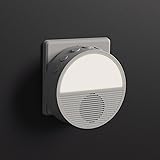Unwind and Rejuvenate: Your Guide to a Blissful Bedtime Yoga Routine for Deep Sleep
Did you know that an estimated 50-70 million adults in the U.S. suffer from a sleep disorder, with chronic insomnia affecting up to 15% of the population? Achieving a truly restorative night’s rest often feels like an elusive dream in our fast-paced world. Yet, the path to deeper sleep might be simpler than you think. The video above offers a fantastic introduction to a gentle bedtime yoga routine, specifically designed to help you shed the day’s stresses and prepare your body and mind for profound relaxation.
This comprehensive guide complements the practice shown in the video, delving deeper into the benefits of evening yoga and providing additional context for each pose. Imagine if you could consistently drift off to sleep feeling calm, centered, and completely at ease. This isn’t just wishful thinking; incorporating a dedicated evening yoga practice into your nightly ritual can transform your sleep quality and overall well-being. Furthermore, it offers a tranquil bridge between the day’s demands and a night of peaceful slumber.
The Science Behind Evening Yoga for Sleep
Engaging in evening yoga for sleep is far more than just stretching; it’s a strategic practice that directly influences your body’s ability to transition into a restful state. Our modern lives often keep our sympathetic nervous system—the “fight or flight” response—in overdrive. This constant state of alertness can make it incredibly difficult to quiet the mind and relax the body when bedtime arrives. Bedtime yoga gently coaxes your body into activating its parasympathetic nervous system, responsible for “rest and digest” functions, thus preparing you for deep sleep.
Moreover, the intentional combination of slow, controlled movements, deep breathing (pranayama), and focused attention helps to downregulate stress hormones like cortisol. This physiological shift not only calms your mind but also releases tension stored in your muscles, promoting a sense of ease throughout your entire being. Regular practice supports the natural production of melatonin, the sleep hormone, which signals to your body that it’s time to wind down. Therefore, consider this practice a holistic approach to enhancing your body’s innate capacity for rest and repair.
Setting the Scene: Preparing for Your Bedtime Yoga Practice
Creating the right environment is crucial for maximizing the benefits of your bedtime yoga routine. As demonstrated in the video, minimal props are needed, emphasizing accessibility and comfort. You might simply want a soft blanket or a couple of pillows to support your body, especially during restorative poses. Additionally, dimming the lights, perhaps lighting a candle (safely, of course), or playing soft, calming music can significantly enhance the serene atmosphere.
Next, dress in comfortable, loose-fitting clothing that allows for full range of motion without restriction. Imagine slipping into your favorite soft pajamas, ready to embrace complete relaxation. Before you even begin the physical practice, take a few moments to mentally prepare. Try to release any lingering thoughts about your to-do list or daily worries, setting a clear intention to dedicate this time to self-care and preparing for a truly good night’s rest. This mindful approach helps to anchor you in the present moment, making the transition to sleep more seamless.
Gentle Stretches for a Calm Mind and Body
The video guides you through a sequence of poses that gently open the body and release tension, specifically targeting areas prone to holding stress. Each movement serves a purpose, preparing you for a night of restorative sleep. Let’s explore some of the key poses and their unique contributions to your evening wind-down.
Neck and Shoulder Release
Beginning with seated neck stretches is an excellent way to address one of the most common areas of tension. Many people carry significant stress in their neck and shoulders, leading to headaches, stiffness, and discomfort. The instructor guides you through gentle ear-to-shoulder stretches, followed by chin-to-chest rolls. This elongates the muscles, improves circulation, and encourages a release of built-up tension.
Furthermore, the Eagle Arms (Garudasana arms) variation, where you cross your arms and bring your forehead towards your biceps, offers a deep stretch across the upper back and shoulders. This specific movement helps to unravel tightness in the rhomboids and trapezius muscles, often strained from prolonged sitting or computer use. Imagine feeling the knots in your shoulders gently unraveling, paving the way for a more relaxed posture as you lie down for sleep.
Spinal Mobility and Core Engagement
Transitioning to a tabletop position allows for foundational spinal movements like Cat-Cow (Marjaryasana-Bitilasana). This flowing sequence gently mobilizes the spine, increasing flexibility and releasing stiffness in the back. As you inhale into Cow pose, lifting your gaze and dropping your belly, you create space and openness in the front of the body. Conversely, exhaling into Cat pose, rounding your spine and drawing your chin to your chest, releases tension in the upper back and neck.
Following this, Puppy Pose (Anahatasana) provides a deeper heart and shoulder opener while gently lengthening the spine. By keeping your hips over your knees and walking your hands forward, you allow your chest to melt towards the floor. This pose effectively stretches the lats and triceps, making it a fantastic release for anyone who feels “hunched” from daily activities. Imagine your heart gently expanding, shedding the emotional burdens of the day, as your spine finds length and ease.
Gentle Backbends and Hip Openers
The sequence progresses into gentle backbends like Sphinx Pose (Salamba Bhujangasana) and Cobra variations. Sphinx pose, performed on your forearms, offers a mild yet effective stretch for the front of the torso and strengthens the lower back without excessive strain. It helps to counteract the effects of sitting, promoting better posture and spinal health. Similarly, the gentle Cobra lifts from the fingertips help to build strength while maintaining a relaxed state, avoiding any forceful movements that could stimulate instead of soothe.
Hip circles from tabletop are an intuitive way to warm up the hips and lower back, encouraging fluid movement in these areas. The seated twist (Ardha Matsyendrasana variation), where one leg crosses over the other, gently compresses and then releases the abdominal organs, aiding digestion and promoting detoxification. This pose also provides a beneficial stretch for the outer hips and glutes, areas that often become tight from prolonged sitting. Imagine wringing out the day’s tension from your torso, leaving you feeling refreshed and balanced.
Restorative Forward Folds and IT Band Release
The forward fold (Paschimottanasana variation with one leg extended) is a cornerstone of restorative yoga for sleep. The video emphasizes making this a passive fold, allowing gravity to do the work. This pose calms the nervous system, stretches the hamstrings and lower back, and signals to the body that it’s time to slow down. Bending the knee generously can help to alleviate any strain, allowing you to focus on the release rather than the stretch itself.
Furthermore, the reclined pigeon pose (Supta Kapotasana) offers a deep hip opener, targeting the piriformis and gluteal muscles. This pose is excellent for releasing tension in the hips, which can often accumulate from emotional stress or physical activity. The IT band stretch, where the crossed leg drops to the side, provides a unique and effective way to release tightness along the outer thigh, which can contribute to knee and hip pain. Imagine the deep fascia releasing, creating a profound sense of lightness in your lower body, essential for comfortable sleep.
Deep Relaxation: The Power of Shavasana
The practice culminates in Shavasana, or Corpse Pose, the ultimate pose for relaxation and integration. The instructor wisely encourages staying in this pose for several minutes or even longer, emphasizing its importance. This isn’t just lying down; it’s an active process of surrender. Here, your body absorbs the benefits of the entire practice, allowing your nervous system to fully recalibrate.
During Shavasana, you consciously release tension from every part of your body, from your facial muscles to your toes. You become aware of your breath, letting go of any effort to control it. Imagine all the physical and mental residues of your day dissolving, leaving you in a state of profound peace and readiness for deep, uninterrupted sleep. This final resting pose is where true integration happens, preparing you not just for a good night’s rest, but for a refreshed morning.
Embracing Mindfulness for a Better Night’s Rest
Beyond the physical postures, the true essence of this bedtime yoga routine lies in its emphasis on mindfulness. The instructor repeatedly reminds you to “let go of the day,” “any to-do lists,” and “focusing on the breath.” This intentional detachment from external stressors and internal chatter is a vital component of preparing for sleep. By channeling your attention to your body and your breath, you create a buffer between your waking concerns and your need for rest.
Simple breath awareness, or observing the natural rhythm of your inhale and exhale, can significantly calm the mind. When thoughts arise, you gently acknowledge them and then guide your attention back to your breath or the sensation in your body. This practice of non-judgmental awareness cultivates a sense of inner peace that extends beyond the mat, contributing to a more tranquil transition into sleep. Therefore, embrace this opportunity to truly connect with yourself, fostering a deeper sense of relaxation and well-being before you drift off to sleep.








